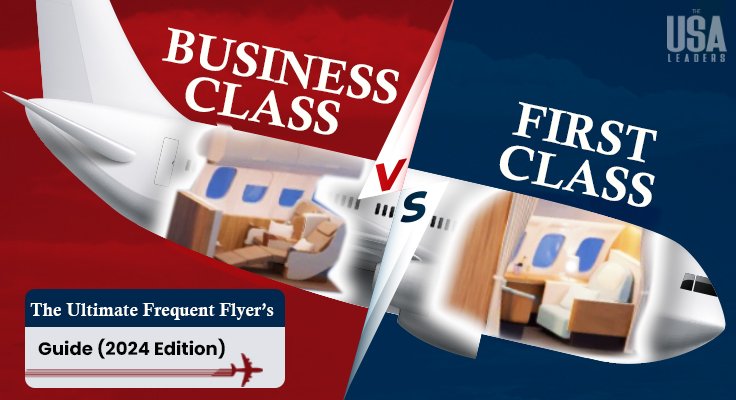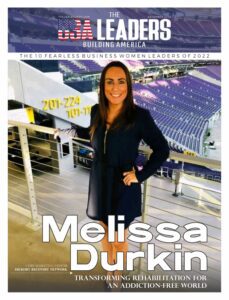Did you know that the average price difference between business class vs. first class tickets in the US is around $5,000?
That’s a lot of money to spend on a few hours of flying. But is it worth it? If you’re a frequent flyer, you probably have a preference for either business class vs. first class.
But how do you decide which one is worth the splurge? And what are the main differences between the two?
In this post, we’ll compare business class vs. first class on domestic flights in the US, where the distinction is not always clear.
We’ll look at the factors that matter most to travelers, such as seat comfort, amenities, service, and price. We’ll also share some tips and tricks on how to get the best deals and make the most of your flying experience.
Whether you’re a seasoned jet-setter looking for more details, or a curious traveler wondering what the fuss is all about, this post is for you.
Read on to find out everything you need to know about business class vs. first class in 2024.
1. The Great Divide: Business Class vs. First Class
Domestic Flights
● Seats & Amenities
When choosing between business class vs. first class, seat comfort and amenities are pivotal factors. Business class typically offers wider seats with more reclining, along with extras like power outlets, USB ports, and entertainment systems.
First class, however, often features fully flat or lie-flat seats for ultimate comfort, enhanced privacy, more storage space, and personalized service.
Airlines like Delta, American, and United offer premium products on select domestic routes, while low-cost carriers like Southwest and JetBlue provide similar perks for both classes.
Websites like SeatGuru and Skytrax help compare configurations, legroom, and amenities across airlines and aircraft.
● Lounge Access
Access to lounges can vary based on airline, route, and membership status, adding another dimension to the business class vs. first-class decision.
For instance, Delta Sky Club and United Club offer access to passengers with qualifying tickets or elite status.
However, access isn’t guaranteed for all passengers, and the quality of lounges varies between airports and airlines.
Websites like LoungeBuddy and Priority Pass provide information and ratings on lounges worldwide.
● Price Point
Price is a significant consideration when weighing business class vs. first class. While first-class tickets are generally pricier, the difference fluctuates depending on factors like airline, route, and demand.
For example, a one-way ticket from New York to Los Angeles might cost $1,000 for business class and $2,000 for first class on American Airlines, while a trip from Chicago to Miami could be around $1000 for both classes.
Deals and last-minute offers can sometimes make first-class tickets more affordable or even cheaper than business class.
Platforms like Google Flights and Kayak help find and compare prices for both classes across different airlines and booking channels.
International Flights
When comparing business class vs. first class on domestic US flights, the disparity in amenities is evident but less pronounced than on international routes.
Internationally, the contrast between the two classes is more distinct, with first class offering superior seats, service, and overall experience.
Examples include fully flat business seats versus first-class suites like those offered by Etihad, Emirates, and Singapore Airlines.
First-class often includes personalized service, gourmet meals, and luxury amenities such as designer kits and chauffeur transfers.
Price differentials on international flights are typically larger and more stable, ranging from thousands to tens of thousands of dollars.
While this post primarily addresses domestic travel, it emphasizes the clearer distinctions and added value of first class on international routes, urging readers to consider factors like seat comfort, amenities, service, and pricing when comparing the two classes.
2. Hacking Your Way Up Booking & Upgrades
So, you’ve learned the difference between business class vs. first class on domestic flights in the US. You’ve also decided which one suits your preferences, budget, and expectations. But how do you book or upgrade to your desired class without breaking the bank?
In this section, we’ll show you some hacks and tips on how to use miles and points, credit cards and loyalty programs, deals and discounts, and upgrade tricks to get the best value for your money. These are proven strategies that frequent flyers use to enjoy the perks of flying in front of a plane.
● Miles & Points
One effective way to secure business class vs. first-class flights is through miles and points earned via airlines, credit cards, or loyalty programs.
However, not all miles and points are equal in value and flexibility. Understanding terms like Award Chart (showing redemption requirements), Award Availability (seats/upgrades allocated for redemption), and Award Booking (reserving with miles/points) is crucial.
Award Transfer enables moving points between programs for better redemption rates or availability. To utilize miles effectively:
- Select destination and dates.
- Check award charts and availability.
- Earn or transfer more points if necessary.
- Book your award flight or upgrade online or by phone.
● Credit Cards & Loyalty Programs
Booking or upgrading to business class vs. first class can be facilitated through credit cards and loyalty programs, offering perks like lounge access and mileage accumulation. These programs are valuable for frequent travelers but require careful selection.
Understanding terms like Travel Reward Card, Frequent Flyer Program, Status, and Alliance is crucial. Effective utilization involves choosing preferred airlines, comparing programs, and applying for suitable cards. However, it requires diligence due to potential complexities and costs.
Therefore, research and comparison are essential for maximizing benefits while being prudent and selective to ensure the best value.
● Deals & Discounts
Booking or upgrading to business or first class can be facilitated through deals, discounts, and upgrade tips. These offers and techniques can significantly reduce costs while providing a premium experience.
Deals and discounts, such as flash sales or promo codes, offer reduced prices but require vigilance due to limited availability and potential scams.
Subscribing to alerts and acting quickly are essential strategies for securing these offers. Upgrade tips, including complimentary upgrades or bidding, offer ways to secure premium seating without the full price.
However, success with upgrade tips relies on timing, method, and courteous behavior. While these methods can provide rewarding experiences, caution is advised due to the variability in availability and ethical concerns.
Being proactive, informed, and polite is key to maximizing value and enjoyment when using these strategies.
3. Taking Flight: The Real Experience of Business Class vs. First Class
So far, we have covered the difference between business class vs. first class on domestic flights in the US, as well as some hacks and tips on how to book or upgrade to your desired class.
But what is it like to fly in business class vs. first class? How does the experience compare and contrast between the two classes?
In this section, we’ll share some personal anecdotes and insights from our own flying experiences in business class and first class.
We’ll also describe the pre-flight and in-flight aspects of each class, such as lounge access, priority boarding, seat comfort, service, and amenities.
We’ll also mention some downsides or limitations of each class, to set realistic expectations and help you make an informed decision.
Business Class
● Pre-Flight Experience:
One of the perks of flying in business class is the pre-flight experience. As a business class passenger, you can enjoy priority check-in, boarding, and baggage handling, as well as access to airport lounges.
Priority check-in, boarding, and baggage handling can save you time and hassle, especially if you’re in a hurry or have a lot of luggage.
You can skip the long lines and go straight to the dedicated counters, gates, and belts for business class passengers.
You can also check in more bags and carry more weight than economy class passengers, without paying extra fees.
Airport lounges can offer you a relaxing and comfortable space to wait for your flight. You can enjoy free Wi-Fi, snacks, drinks, magazines, and newspapers, as well as showers, workstations, and charging stations. Some lounges may also have spa services, such as massages, manicures, or facials, for an additional fee.
However, not all airport lounges are created equal. Some lounges may be more spacious, modern, and luxurious than others, depending on the airport and the airline.
Some lounges may also be more crowded, noisy, and dirty than others, depending on the time and the demand. Therefore, you may need to do some research and comparison before choosing a lounge to visit.
● In-Flight Experience:
The in-flight experience is a perk of flying in business class. You can enjoy more comfort, convenience, and productivity. You can enjoy better seats, meals, and service.
Business class seats are wider, more spacious, and more reclined. They have power outlets, USB ports, headphones, and entertainment systems. They may also have headrests, footrests, lumbar support, and kits.
Business class passengers get free meals, drinks, and snacks. The meals are more varied, tasty, and healthy. The drinks are more premium and alcoholic. The snacks are more fresh and frequent. The service is more attentive and courteous.
Business class passengers have more tools to work or relax. They can access the internet, send emails, or watch movies. They can also listen to music, read, or sleep.
However, not all business-class seats and services are equal. Some may be more comfortable and private. Some may also be more consistent and satisfying. Therefore, you need to check the reviews and ratings before booking or upgrading.
First Class
● Pre-Flight Experience:
The pre-flight experience is a benefit of flying in first class. You can enjoy more perks than business class passengers. You can enjoy champagne, concierges, and transfers.
Champagne is a welcome drink when you board the plane. It is a high-quality and expensive champagne. It is a nice way to start your flight and celebrate.
Concierges are staff members who assist you with your travel needs. They can help you with check-in, boarding, baggage, lounge, seat, meal, and requests. They can also provide you with information and recommendations.
Transfers are car services that take you to and from the airport. They can be luxury sedans, SUVs, or limousines. They can save you time, money, comfort, and convenience.
However, not all first-class passengers have these perks. Some perks may only be available on some airlines, routes, or aircraft. Some perks may also depend on availability, demand, or eligibility. Therefore, you need to confirm and reserve these perks or ask the staff.
● In-Flight Experience:
The in-flight experience is a benefit of flying in first class. You can enjoy more benefits than business class passengers. You can enjoy attention, dining, and features.
Attention is the service and care from the crew. It is more attentive, courteous, and personalized. You may have a dedicated flight attendant and more interaction.
Dining is the food and drinks during the flight. It is more varied, delicious, and healthy. You may have a choice of dishes, drinks, and options.
Features are the amenities and facilities during the flight. They can vary by airline, route, and aircraft. They can include suites, showers, bars, or entertainment systems.
Suites are private and spacious cabins with more comfort, privacy, and luxury. They may have a door, a window, a closet, a vanity, or a sofa. They may also have a bed, a TV, a minibar, or a tablet.
Showers are private and luxurious bathrooms with more hygiene, freshness, and relaxation. They may have a shower, a sink, a toilet, a mirror, or a window. They may also have toiletries, towels, robes, or features.
Bars are social and fun areas with more entertainment, interaction, and enjoyment. They may have a bar, a lounge, a sofa, or a table. They may also have snacks, drinks, games, or devices.
Entertainment systems are advanced and interactive devices with more options, features, and quality. They may have a larger screen, a better sound, or a touch screen. They may also have movies, TV shows, music, games, or live TV.
However, not all first-class seats and services are equal. Some may be more luxurious and exclusive. Some may also be more expensive and scarce. Therefore, you need to check the reviews and ratings before booking or upgrading.
4. Is First Class Worth It?
Is flying in first class worth it? It depends on who you are, why you fly, and what you value. It also depends on the airline, the route, and the aircraft type. Here are some pros and cons for different types of travelers:
- Work travelers: Flying in first class can make you productive, efficient, and professional. You can enjoy comfort, convenience, and productivity. You can also impress your clients, partners, and colleagues. However, flying in first class can be expensive, extravagant, or arrogant. It can also create unrealistic expectations.
- Leisure travelers: Flying in first class can make your trip memorable, enjoyable, and special. You can enjoy luxury, exclusivity, and innovation. You can also boost your relationship, mood, and self-esteem. However, flying in first class can be costly, indulgent, or unnecessary. It can also create unrealistic expectations.
- Pleasure travelers: Flying in first class can offer you a premium and exclusive experience. You can enjoy comfort, service, and meals. You can also enjoy the lounge, chauffeur, concierge, and spa. Also, you can also satisfy your curiosity, taste, and aspirations. However, flying in first class can be costly, excessive, or insensitive. It can also create detachment, boredom, or dissatisfaction.
Therefore, you need to weigh the pros and cons carefully. You need to consider your trip’s purpose, duration, frequency, and context. So, you also need to consider the cost, impression, and fulfillment of flying in first class. You may find flying in first class is worth it sometimes, but not always.
5. Is the Splurge Worth It?
In this post, we have explored the difference between business class vs. first class on domestic flights in the US. We have compared and contrasted the two classes on four key aspects: seat comfort, amenities, service, and price.
However, we have also shared some hacks and tips on how to book or upgrade to your desired class, as well as some personal anecdotes and insights from our own flying experiences.
We have also analyzed the value proposition of flying in first class for different types of travelers, such as high-value business trips, special occasions, or luxury seekers.
But the ultimate question remains: is the splurge worth it? Which one should you choose for your next domestic flight? The clash is the “Business class vs. First class.”
The answer is: it depends. It depends on your personal preferences, budget, and expectations. It also depends on the airline, the route, and the aircraft type.
There is no one-size-fits-all answer to this question, as different travelers may have different needs and goals.
Therefore, we encourage you to make an informed decision based on your criteria and research. You can use the information and advice that we have provided in this post, as well as other sources and reviews that you can find online or offline. You can also use your own experience and intuition to guide you.
Whatever you decide, we hope that you enjoy your flight and have a great time at your destination. Remember, flying is not just a means of transportation, but also an opportunity to have fun, learn, and grow.





















